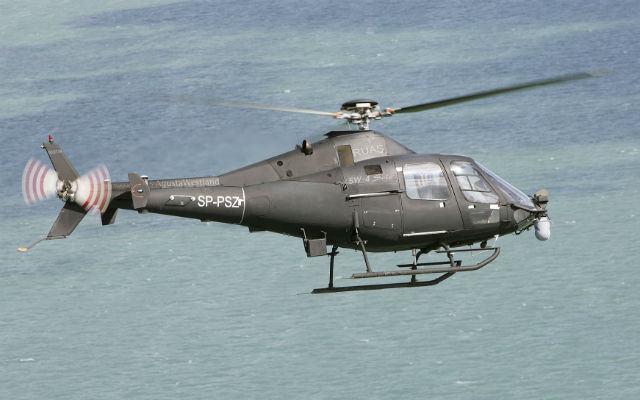AgustaWestland has given international show debuts to a pair of its optionally-piloted and unmanned air vehicle designs in Dubai.
Sporting a black livery and based on the SW-4 airframe produced by Polish subsidiary PZL Swidnik, the 1.8t Solo has previously undergone a series of flight trials in the UK, in support of a technology demonstration for the Royal Navy. This involved flying the 6h-endurance aircraft autonomously but with a safety pilot onboard, including during simulated deck recoveries performed using a trailer-mounted landing pad.
With the successful trials behind it, the company has decided to bring the Solo to market, promoting it for optionally-piloted use, or as a fully unmanned system.
“We are ready to start looking for a customer, to sell this product,” says James Wang, the company’s senior vice-president, helicopters and services marketing. He identifies the Middle East region as holding particular potential, due to its nations’ requirements in the areas of border patrol and maritime surveillance.
With a 9m (29.5ft) rotor diameter, the Solo is capable of carrying a maximum payload of 470kg (1,035lb), including electro-optical/infrared sensor and synthetic aperture sensor payloads. It also could be used in roles such as environmental monitoring or cargo supply, its developers believe.
“It has all been flown, developed and tested,” says Wang of the unmanned operating technology. Further flights scheduled to take place next year will trial the aircraft without a pilot onboard, and a production version would benefit from a package of enhancements now being explored for the civilian SW-4.
Also on show is the Hero – a 180kg unmanned rotorcraft with a total payload capacity of 90kg and a 3m rotor diameter. This size, combined with a 6h operating endurance, makes the model a candidate for ship-based operations, and AgustaWestland plans to perform fully autonomous landings aboard a naval vessel next year.
A key part of the company’s offering is that both products make use of a shared control system, Wang says.
“We hope customers will buy the big and small systems to operate together – but it depends on the size of the customer. Both the systems are ready for sale.”
Source: Flightglobal

